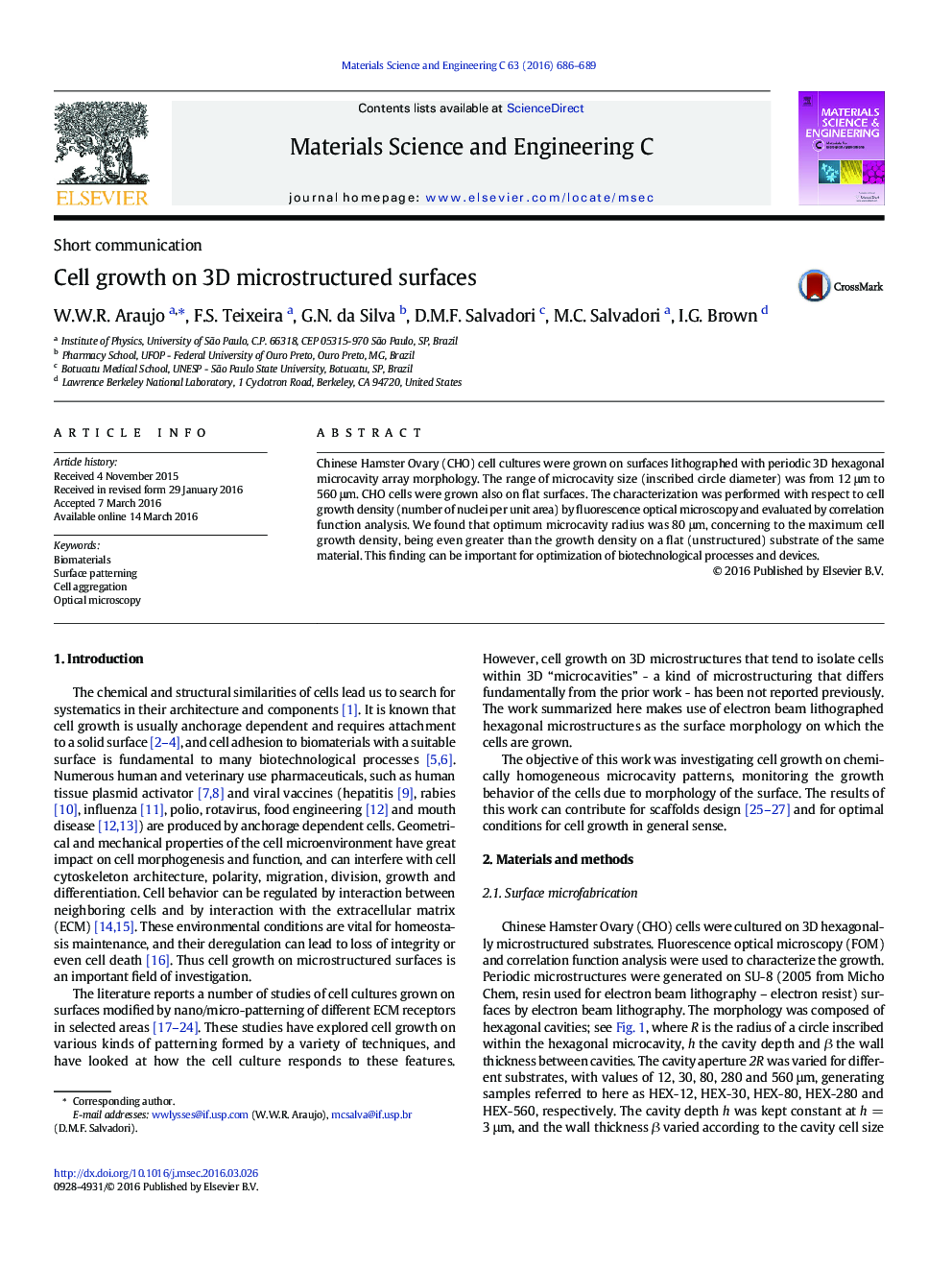| Article ID | Journal | Published Year | Pages | File Type |
|---|---|---|---|---|
| 1428065 | Materials Science and Engineering: C | 2016 | 4 Pages |
•Cell culture was performed on surfaces with periodic structures to study the impact of their size scale in cell growth.•On the optimized microcavity radius, the cell growth density is greater than on a flat substrate of the same material.•The results can be important for optimization of biotechnological processes and devices.
Chinese Hamster Ovary (CHO) cell cultures were grown on surfaces lithographed with periodic 3D hexagonal microcavity array morphology. The range of microcavity size (inscribed circle diameter) was from 12 μm to 560 μm. CHO cells were grown also on flat surfaces. The characterization was performed with respect to cell growth density (number of nuclei per unit area) by fluorescence optical microscopy and evaluated by correlation function analysis. We found that optimum microcavity radius was 80 μm, concerning to the maximum cell growth density, being even greater than the growth density on a flat (unstructured) substrate of the same material. This finding can be important for optimization of biotechnological processes and devices.
